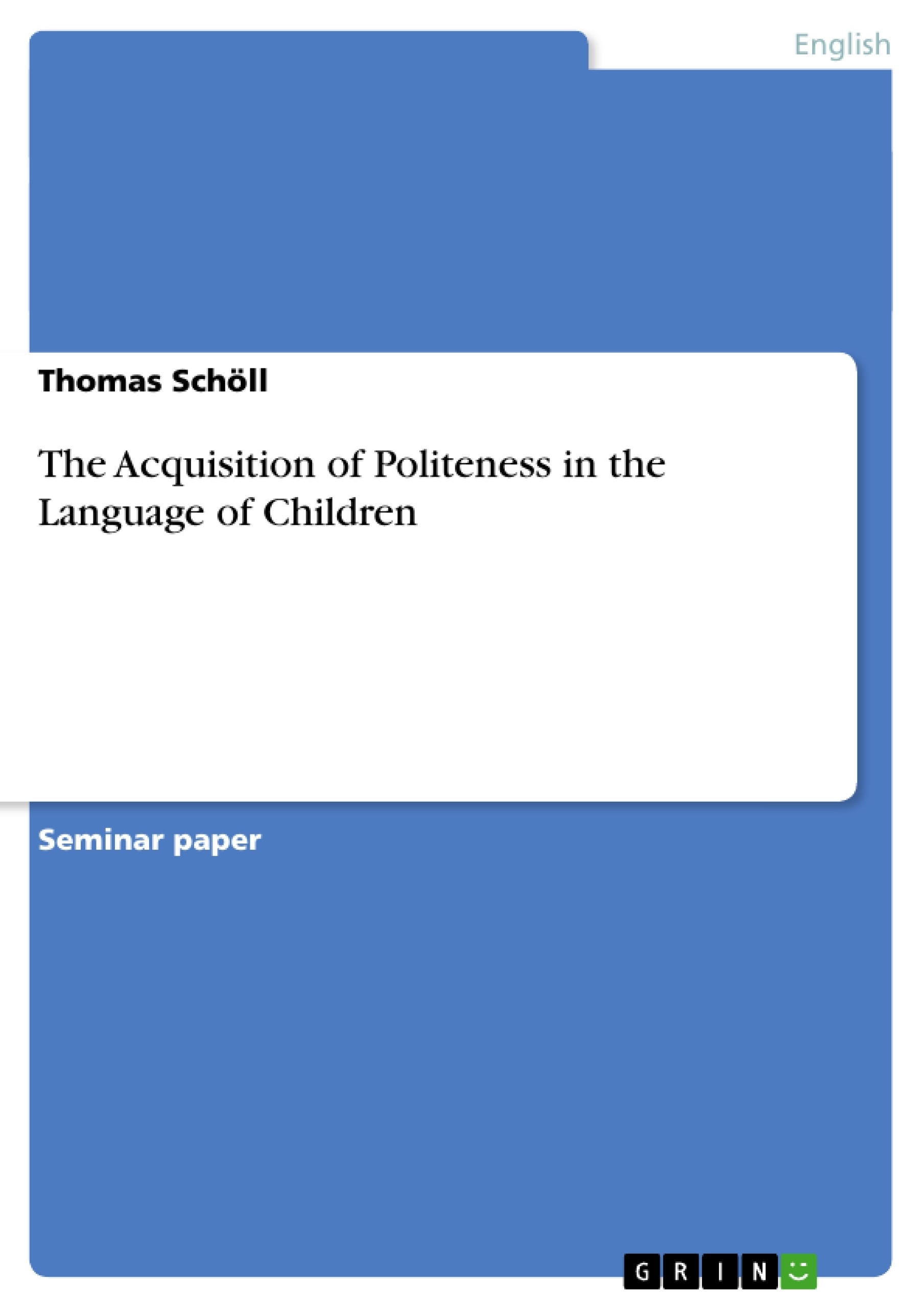Introduction: Politeness as a General Concept
According to Brown and Levinson (1978) politeness is a complex system for all human puplic and social interaction with the conventional politeness forms such as requests (e.g.: May I please use your phone?), excuses (e.g.: I'm very sorry for being late!), greetings (e.g.: Good evening, my dear Mister Jones.), orders (e.g.: Could you please be so kind as to give me the sugar?), claims (e.g.: Excuse me, this is my seat.), offers (e.g.: Would you like to have a cup of coffee?), 'please' and of course 'thank you'.
In 1973, Robin Lakoff pointed out that the system of politeness follows two major rules:
1. Be clear.
2. Be polite.
The first rule includes Grice's postulates accounting efficiency, economy and informativeness:
a) Quantity: Be as informative as required.
Be no more informative than required.
b) Quality: Say only what you believe to be true.
c) Relevance: Be relevant.
d) Manner: Be perspicuous.
Don't be ambiguous.
Don't be obscure.
Be succint.
[...]
Inhaltsverzeichnis (Table of Contents)
- Introduction: Politeness as a General Concept
- Analysis about "The Developmental Perspectives on Politeness Forms"
- Examples: Addressing the Child's Face Needs
- Politeness and Persuasion in Children's Language/Dating the Acquisition of Polite Forms
- How Children Direct Polite Forms
- What Affects the Choice of Control Acts?
- Activity and Context
- Status
- Rights
- Costs
- Experiments on Children's Use of Polite Forms
- Anderson's Hand Puppet-Study
- Ervin-Tripp's and Gordon's Analysis about Politeness and Persuasion (1986)
- Testing the Children's Awareness of Polite Forms
- Why Was He Nicer?
- The Developmental Stages in Acquiring a Politeness System Language
- When Children's Requests are Ignored or Refused
- Summoned Up Results
Zielsetzung und Themenschwerpunkte (Objectives and Key Themes)
This paper aims to explore the acquisition of politeness in children's language, drawing on diverse studies and observations to understand the developmental processes involved. It examines how children acquire the complex system of politeness, considering factors such as social distance, power dynamics, and the influence of adult models.
- The development of politeness forms in children's language
- The role of adult models in shaping children's politeness strategies
- The relationship between social context, power dynamics, and politeness
- The impact of face needs on children's use of polite language
- The developmental stages involved in acquiring a politeness system
Zusammenfassung der Kapitel (Chapter Summaries)
The introduction defines politeness as a complex system of social interaction, outlining the key politeness forms and rules as described by Brown and Levinson (1978) and Robin Lakoff (1973). This section also sets the stage for exploring the acquisition of politeness in children.
Chapter 2 examines the "Developmental Perspectives on Politeness Forms" by analyzing the research of Snow, Perlman, Gleason, and Hoshyar. This study observed the use of politeness markers by parents in everyday conversations with their children, shedding light on the frequency and types of politeness strategies employed. It also explores how parents address their children's face needs through their use of language.
The examples in Chapter 2.1 showcase real-life interactions between parents and children, highlighting how parents model and guide their children's use of polite language. These examples illustrate the importance of adult models in shaping children's understanding of social expectations and the consequences of using inappropriate language.
Schlüsselwörter (Keywords)
The key themes of this work include politeness acquisition, developmental perspectives, face needs, social distance, power dynamics, adult models, and child language development. The text draws on empirical studies, particularly those investigating the use of politeness forms in children's everyday interactions, to examine the complex interplay between language and social interaction in the development of politeness.
- Arbeit zitieren
- Thomas Schöll (Autor:in), 1997, The Acquisition of Politeness in the Language of Children, München, GRIN Verlag, https://www.hausarbeiten.de/document/12026


